 The Online Time Capsule
The Online Time Capsule
 A hologram in the palm: 3D projector that could give mobile devices same capabilities as R2-D2 from Star Wars
A hologram in the palm: 3D projector that could give mobile devices same capabilities as R2-D2 from Star Wars
Mobile phones could be able to emit holograms after a US company created a projector small enough to fit into the device.
A prototype the size of a Tic-Tac is bringing science fiction to life with an image that in tests has been smooth and consistent.
The company behind it says that phones will have the same capabilities as R2-D2 in Star Wars when the robot emits a hologram of Princess Leia.
The technology could also be used on TVs, computer screens, smart watches and even tablets.
The chip has been developed by California-based Ostendo Technologies Inc which has spent nine years working on it.
It will start selling a 2D version of its high-res projector next year, with the hologram-projecting one set to launch in 2016.
The company’s chief executive Hussein El-Ghoroury said: ‘Imagine if everything coming back to you was in 3D; all of your shopping, all of your gaming, every way you retrieve data’.
The Ostendo Quantum Photonic Imager is an image processor with thin micro light-emitting diodes and software which renders the image properly.
It consists of six chips laid together that so far can emit a 3D image of green dice into the air.
Ostendo is being financed by £60million from venture capital firms and Peter Thiel, Facebook’s first outside investor.
It has also been awarded around £25million by the US government’s futuristic Defense Advanced Research Projects Agency.
Holograms have recently been used to resurrect dead pop stars such as Michael Jackson, who stunned the crowd when he ‘performed’ at the Billboard Awards earlier this year.
Rapper Tupac Shakur has also been resurrected and a hologram of him has appeared at a number of concerts including the Coachella festival in 2012.
Holographic devices have been around in some form or another since the 19th Century but only now has the technology been cheap enough for them to be considered for large scale production.
Microsoft is working on its own virtual reality room and Facebook recently bought Oculus for £1.2billion.
The technology firm has developed a headset that puts the user in a 3D environment akin to the 1992 science fiction drama The Lawnmower Man.
Source: http://www.dailymail.co.uk/news/article-2652457/A-hologram-palm-hand-3D-projector-fit-mobile-phone-devices-capabilities-R2-D2-Star-Wars.html
��������������
 UEFA EURO 2016 FRANCE Day Two & Day Three - The DAGGER OF TIME's PREDICTIONS
UEFA EURO 2016 FRANCE Day Two & Day Three - The DAGGER OF TIME's PREDICTIONS
EURO 2016 - Group A
June 11
Albania 1 - 3 Switzerland
EURO 2016 - Group B
June 11
Wales 1:1 Slovakia
England 2 - 3 Russia
EURO 2016 - Group D
June 12
Turkey 0 : 2 Croatia
EURO 2016 - Group C
June 12
Poland 1: 0 N.Ireland
Germany 4:2 Ukraine ��������
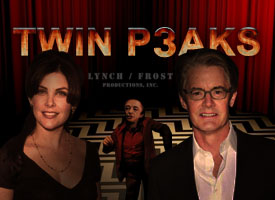
 Prophecy foretold: The 'Twin Peaks' promised return for June 10th, 2016! See who will be back.
Prophecy foretold: The 'Twin Peaks' promised return for June 10th, 2016! See who will be back.
My prediction about Who will be back : Dale Cooper (bald) for sure, Audrey Horne (with 3 children and 2 divorces), Sheriff Harry S. Truman (white hair, 2 children), Hawk (without changes), fat Lucy Moran, Bobby Briggs with white hair and business career, Big Ed Hurley, who had grandsons with Norma, James Hurley without changes except, that he drive sport bike motorcycle now, and of course the an evil ralative of Leo Johnson seeking for revenge :D
////////////////////////////////////////////////////////////////////////////////////////////////////////////////////////////
After being super coy on Twitter earlier this month, David Lynch and Mark Frost have confirmed that Twin Peaks will return in 2016, more than 25 years after the show first premiered on ABC, in a limited series run for Showtime. (Our guess is June 10th, 2016, as the prophecy foretold.) Lynch will direct all episodes, and both Lynch and Frost will handle writing. According to Deadline, the new Twin Peaks with be set in the present day and will provide answers to some of the long-standing (seriously, over two decades) questions.
////////////////////////////////////////////////////////////////////////////////////////////////////////////////////////////
No word on if Kyle MacLachlan will return in the (lead) role as FBI Agent Dale Cooper, but #damngoodcoffee is inspired by one of his most memorable lines. We'd be damn surprised if he doesn't have at the very least a cameo.
////////////////////////////////////////////////////////////////////////////////////////////////////////////////////////////Source: http://www.theverge.com/2014/10/6/6919003/twin-peaks-is-coming-back-in-2016-on-showtime
The Prophecy: http://www.theverge.com/2014/10/6/6919641/twin-peaks-prophecy-foretold-2016-return ////////////////////////////////////////////////////////////////////////////////////////////////////////////////////////////����������
 Views : 1310
Owner: The ScrOWL
Views : 1310
Owner: The ScrOWL

 200 Days to UFC 200 MMA War. My Prediction on WHICH BEASTS WILL BATTLE THERE
200 Days to UFC 200 MMA War. My Prediction on WHICH BEASTS WILL BATTLE THERE
Then, on the Octagon battlefield in the newly constructed MGM-AEG Arena, will clash those vicious creatures:
MAIN CARD WAR PREDICTIONS:
Jones vs DC II
Connor vs RDA
Cain vs Werdum II
Ronda vs Holm II
Rockhold vs Weidman II
Lalwer vs Johny Hendricks III
Preliminary CARD WAR PREDICTIONS:
Arlovski vs Overeem
Anthony Johnson vs Ryan Bader
TJ Dillashaw vs Cruz (rematch / Cruz won the first battle in March/)
Rory McDonald vs Demian Maia
Khabib Nurmagomedov vs Joseph Duffy
There will be no mercy for noone. Your BIGGEST FEAR awaits you inside the octagon.
�����
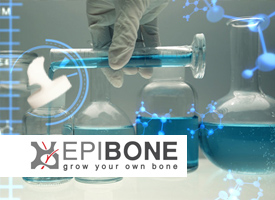
 Medical Prediction: Patients will lab-grow their own bones from stem cells
Medical Prediction: Patients will lab-grow their own bones from stem cells
Nina Tandon is CEO and co-founder of EpiBone, a biotech company set up in 2012 to bio-engineer bone tissue replacements.
Why do we need to grow bones?
At the moment, the only way to get bone for grafts is to cut it out of a human. If you need a piece of bone for, say, your ankle, they’ll cut it out of your hip. There are several million of these bone-grafting procedures done every year worldwide. The idea is to grow bone from a patient’s own cells so they won’t need that second surgery and so the implanted bone won’t be immunologically rejected.
How would you do this?
First, we’ll take a CT scan to get the 3D structure of a patient’s bone and use a high-precision machine to carve a decellularised bovine bone into the required shape. Then we’ll take fat tissue from a patient and extract stem cells from it. We combine the stem cells with the piece of carved bone and put it into a bioreactor [a vessel that supports tissue growth outside of the body]. That’s where the magic happens – after three weeks in the bioreactor we have a piece of bone ready for implantation. We’re working in pigs at the moment but will use the same principle for humans.
Why pigs? Don’t these things usually start in mice?
Pigs are a good fit for the bone we’re working on. We wanted a strong proof of concept so chose the most difficult bone in the head – the temporomandibular joint for the jaw. Pigs are great because they’ve got a very similar sized head to humans and use the bone in a similar way, in a kind of circular chewing motion.
And, erm, what does your lab smell like?
Ha! No we don’t keep the pigs in the lab. They’re kept in a facility offsite.
Advertisement
How soon will the technology be available for humans?
The science is getting really close. We’re about to start a second, larger study in pigs and are doing work in preparation for human clinical trials with the FDA [US Food and Drug Administration]. We are also planning small-scale implantations in humans in the next year and a half. So pretty soon hopefully!
You and your co-founder Sarindr Bhumiratana both did your PhDs in growing many types of tissue. Why did you choose bone?
As a small startup we have to think a little differently from academia. We chose to push forward on an application that was closest to reaching people.
You worked as a healthcare business consultant after your PhD and did an MBA during your post-doc. It’s an unconventional route for a laboratory scientist, no?
I’ve been walking that line between the intellectual freedom you get in academia and the practical applications that you get in industry. I was really drawn to the wider world that I perceived as affecting my little work in the lab.
I highly recommend for any academics to spend time in industry and maybe for some people in the workplace to dip their toes into scholarly work, too. I think both have so much to offer. I’ve had wonderful experiences that have really helped me.
Any messages for aspiring science entrepreneurs out there?
Google ‘DIY bio’ and your city name: you’ll find community-based laboratories or bio-hacking meet ups. Look at the disruptive effects from garage-start-ups during the technology revolution – HP, Amazon, Google. Biology has the potential to be just as disruptive. Now is the time for the biology revolution so, whether or not you have a science degree, you should get involved!
Source: http://www.theguardian.com/������
 UFC 199: Rockhold vs Bisping 2 MMA Octagon Devastating Predictions
UFC 199: Rockhold vs Bisping 2 MMA Octagon Devastating Predictions
MAIN CARD
Middleweight: Rockhold (c )def. Michael Bisping via KO (high kick and punch, Round 1 3:38)
Bantamweight: Dominick Cruz (c) def. Urijah Faber via Decision (Unanimous)
Featherweight: Max Holloway def. Ricardo Lamas
Middleweight: Hector Lombard def. Dan Henderson via TKO (knees and punches)
Lightweight: Bobby Green def. Dustin Poirier via Submission (Arm triangle choke)
Preliminary Card (Fox Sports 1)
Featherweight: Clay Guida def. Brian Ortega via Decision (Unanimous)
Lightweight: James Vick def. Beneil Dariush via TKO (high kick and hammer fists)
Women's Strawweight: Jéssica Andrade def. Jessica Penne via Decision (Unanimous)
Featherweight: Cole Miller vs. Alex Caceres
Submission of the Night: Max Hollaway
KO of the Night: Luke Rockhold
Fight of the Night: Dominick Cruz vs Urijah Faber��������
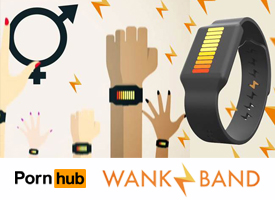
 Pornhub's WANKBAND sets Guinness World Record for amount of energy generated by "hand"
Pornhub's WANKBAND sets Guinness World Record for amount of energy generated by "hand"
"The power is in your hand" slogan seems to be more than successful- Pornhub's WANKBAND achieved unbelievable results in less than 6 months (after the official release on Christmas 2015). The basic price of $69 didn't stop the wankters around the world. They unite to set a world record for amoount of energy generated by wanking. 6900 Wankters unite in Las Vegas last night and generated 6900Kw in memorable 12 hours test. The future is here - the power plants are now millions ... all the hot girls around the world are more powerful than uranium and plutonium - they are the reason behind generating GW just in seconds.
Next month will be the official announcment of the Wank'n Watch® - Ponrhub's Smart Watch, allowing you to watch you favourite porn direclty on your "working" hand ;)
Official website: http://www.pornhub.com/devices/wankband����������
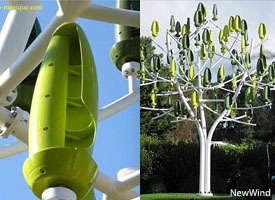
 NewWind Tree Turbines form renewable energy forests around the world
NewWind Tree Turbines form renewable energy forests around the world
One of the biggest criticisms against wind turbines is that they aren’t usually nice to look at, but that may be about to change thanks to the French company NewWind. Their new device, Tree Vent, is an array of vertical wind turbines that look a lot like a tree.
Though the tree looks like a piece of modern art that would fit in at any urban area, it also provides a very important function. Each tree has a current power output of 3.1 kilowatts, which might not be able to power much on its own. However, using several of the trees together as landscape features in a park or along a roadside would make more of an impact to the homes and buildings nearby.
The trees are 11 meters (36 ft) tall, and 8 meters (26 ft) in diameter at its widest point, which makes it about the same height as many urban trees. The white frame of the tree is made out of steel, and it can hold 72 turbines that sit vertically. This orientation cancels out noise, allowing the turbine to spin silently. Wind turbines are typically very tall in order to reach the altitude where the wind is stronger, but these vertical turbines are able to spin with wind blowing as low as 7 km/h (4.4 mph), making this twice as sensitive as traditional turbines. However, they are durable enough to withstand Category 3 winds, which can reach 178 - 208 km/h (111-129 mph).
Each turbine “sheet,” called an Aeroleaf, is constructed out of lightweight plastic. The plastic has been treated with a resin which protects it from weather conditions such as humidity and salt (for areas close to the sea). The turbines are wired in parallel so that if one stops working for whatever reason, the others will not be affected.
Anxious to check one of these out? NewWind will be testing a tree in Paris’s Place de la Concorde between March 12 and May 12 of this year, allowing the public to see how the turbine functions in a normal setting. About 40 more units are due to be installed around the country in September.
For those wanting a Tree Vent for themselves, you are going to have to wait a bit longer. They aren’t due to go into mass production until the summer of 2016 and will initially only be available in France and other proximal European countries. There is no word on when or if they plan to extend the product into the United States. The approximate price of each tree will be about €29,500 (US$35,000), though that price will hopefully decrease as production becomes less expensive and the technology is further developed.
Source: http://www.iflscience.com/technology/new-wind-turbine-looks-tree-coming-paris������
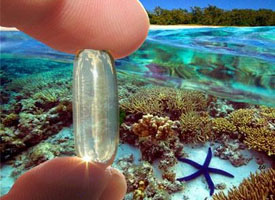
 The complete inventing of the Sunscreen Pill - helps preventing the skin from aging and UV damaging
The complete inventing of the Sunscreen Pill - helps preventing the skin from aging and UV damaging
A secret from the sea could lead to a pill that prevents sunburn within five years, say scientists.
British researchers have uncovered the unique way coral shields itself against harmful ultraviolet (UV) rays.
They believe the discovery could pave the way for a sunscreen revolution with a tablet that protects both skin and eyes.
Scientists are close to producing a synthetic anti-sun compound based on those found in coral.
If the research progresses as hoped, the first sunscreen pill could become a reality in five years.
Such a product may have to be on prescription only to prevent people overdosing and harming their health.
Some skin reaction to UV is vital for the production of vitamin D. Too much sun protection can lead to vitamin D deficiency, resulting in weak bones.
Coral is an animal that only survives because of the algae living within it.
The mutually dependent relationship between the two organisms is the key to coral sun protection.
Dr Paul Long, who is heading the three-year project at King's College London, said: "What we have found is that the algae living within the coral makes a compound that we think is transported to the coral, which then modifies it into a sunscreen for the benefit of both the coral and the algae.
"Not only does this protect them both from UV damage, but we have seen that fish that feed on the coral also benefit from this sunscreen protection, so it is clearly passed up the food chain.
"This led us to believe that if we can determine how this compound is created and passed on, we could biosynthetically develop it in a laboratory to create a sunscreen for human use, perhaps in the form of a tablet, which would work in a similar way.
"We are very close to being able to reproduce this compound in the lab, and if all goes well we would expect to test it within the next two years."
Source and more information: http://www.theguardian.com/environment/2011/aug/31/sunscreen-pill-coral-five-years���
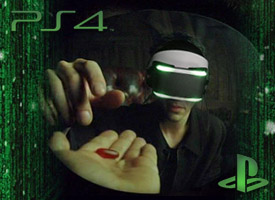
 Sony’s new Project Morpheus VR headset shows you how deep the rabbit-hole goes
Sony’s new Project Morpheus VR headset shows you how deep the rabbit-hole goes
At a Game Developers Conference event (March 4th, 2015), Sony revealed more plans for the company's previously announced Project Morpheus VR headset, which will be coming in the first half of 2016.
While no prices or bundling details were announced, the device's improved specs were outlined by Sony Worldwide Studios president Shu Yoshida. Someone in the audience let out an audible "wow" when Yoshida started by revealing Morpheus' 120 Hz refresh rate and key display update. The screen is now an OLED display at 1920 x RGB x 1080, which Yoshida said means low persistence and removing motion blur from the old LCD. The device's screen is 5.7 inches, which is large enough for a 100 degree field of view. And the new design includes nine LED trackers to provide 360 degree tracking, according to Sony.
"With these specs achieved, we're one step closer to making VR a reality for games," Yoshida said. He went on to say that with the device "near final tech," there's finally a set of standards for developers to target.
Sony hinted that actual games for Morpheus would have to wait until E3. However, the company is allowing GDC press to spend some time with four new demos. There's "London Heist," meant to show off "advanced interactions with the virtual world through PS Move and 3D audio." An updated version of previous demo "The Deep" was meant to display improved graphics. "The Toybox" demonstrates that "VR is great for adorable, light-hearted content too," according to Yoshida (he explained it's a demo where you play with tiny robots). And the Sony executive wrapped up his explanations with "Magic Controller," which shows how "DualShock 4 can be used in VR and tracked by the camera." (That last title runs in 120 fps natively, according to Sony.)
Though Morpheus is currently the only publicly announced console-based virtual reality solution, it will launch amid a number of PC and mobile-based competitors. Oculus has yet to announce a specific date for a first consumer version of its Rift headset, but it's widely expected to have something ready to launch this year. Valve and HTC recently announced a partnership to get a competing, PC-based VR headset, the Re Vive, into consumers' hands sometime this year as well.
Ars is currently going hands-on with Project Morpheus at GDC. We'll update this report with more logistical information as it becomes available, and we'll share our initial impressions on the new device as soon as we can.
Source: http://arstechnica.com/gaming/2015/03/sony-ps4-gets-vr-with-project-morpheus-in-early-2016/������������